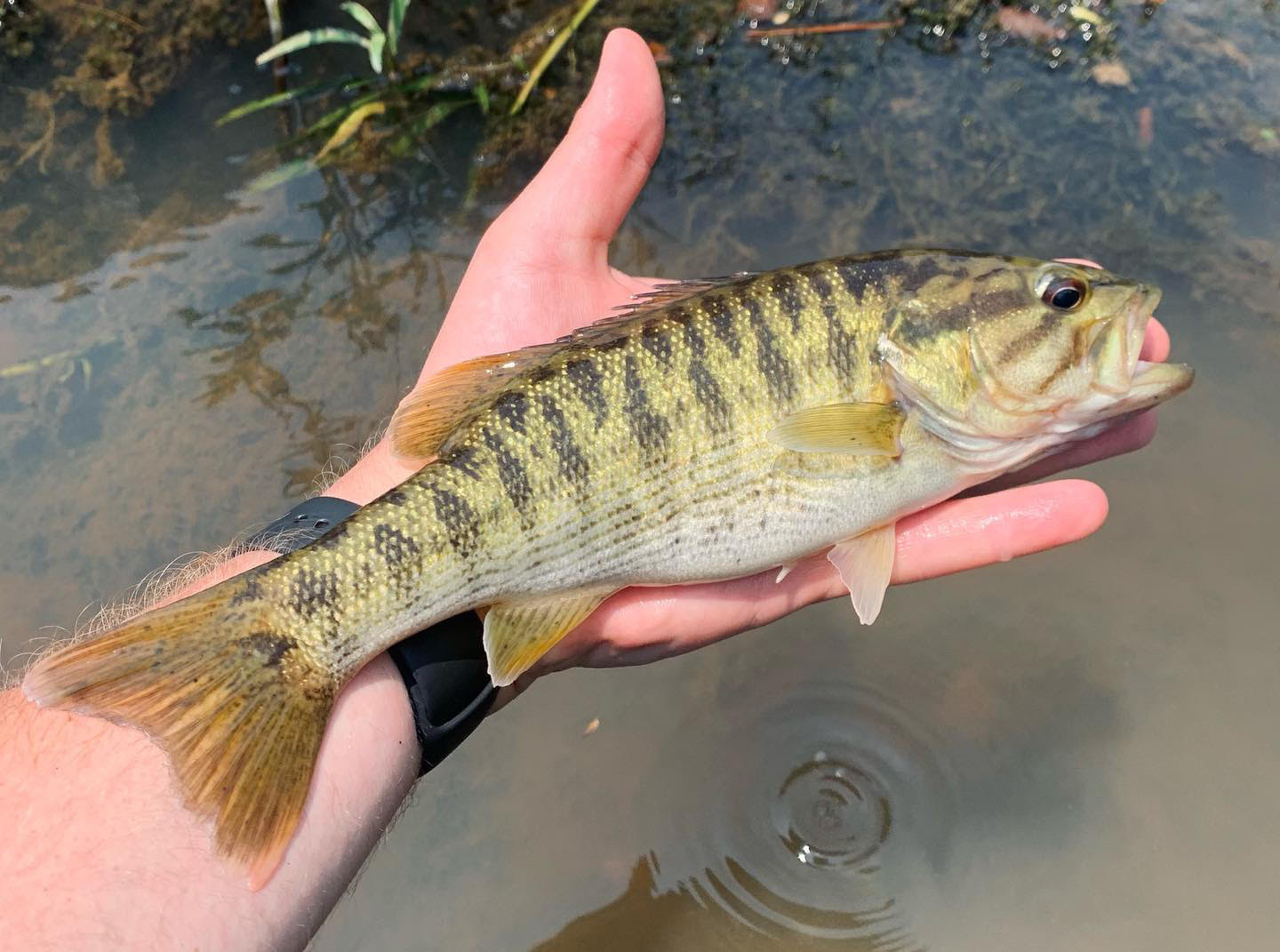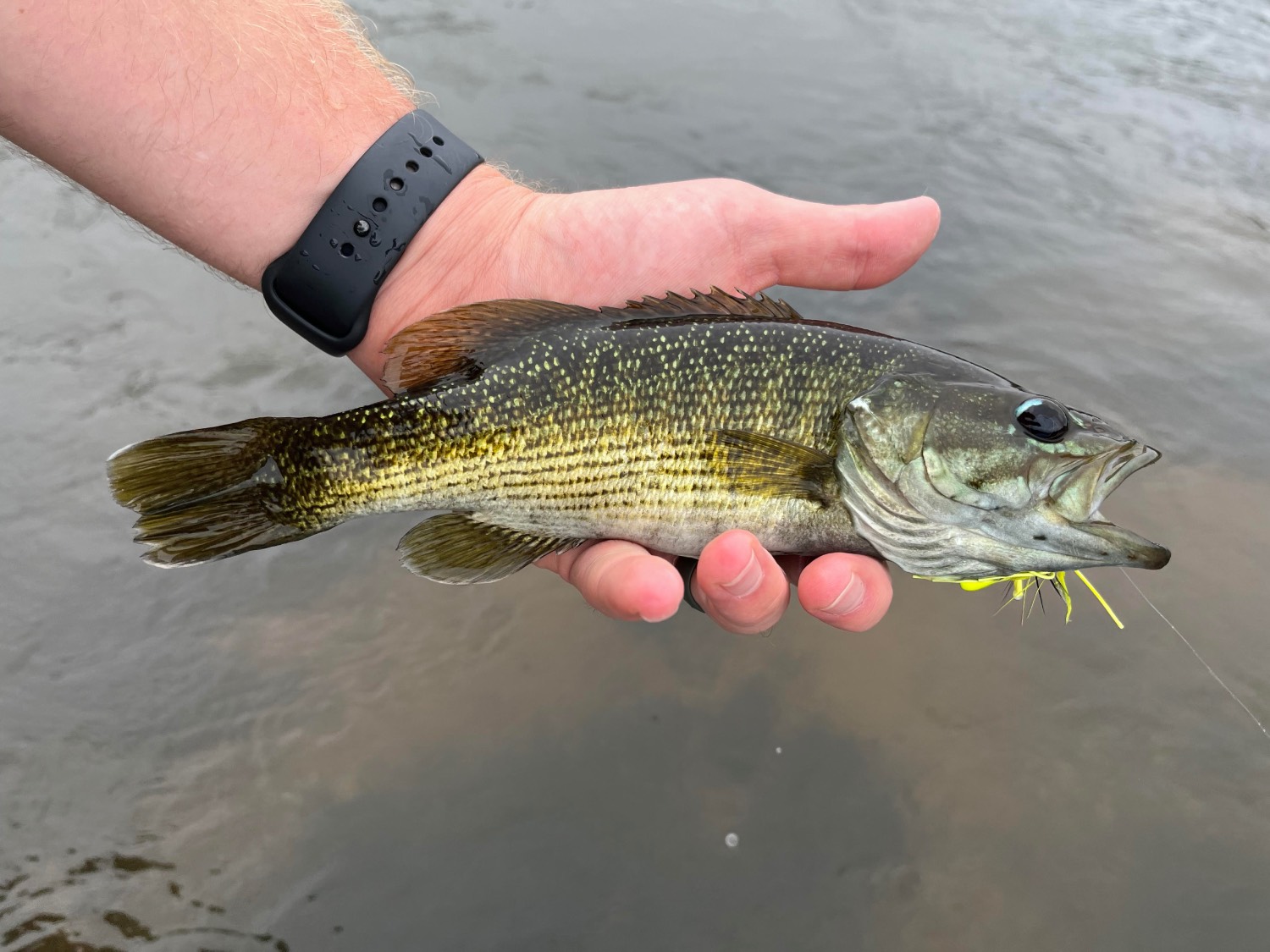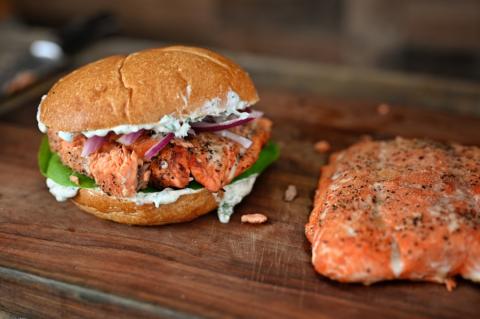Will Garrett Mundhenke
The alarm went off at 7:00am, an unusually late start time for a fishing excursion that included a multiple hour drive, but then again we were not chasing your typical quarry. We loaded up the 4 weight fly rods, fishing packs, permethrin soaked clothing, and smeared in the sunscreen before heading out for the Sumter National Forest in western South Carolina. After a roughly two hour drive that included swinging by a local favorite for a cajun filet biscuit, we rumbled our way down the dirt Forest Service roads in our old Silverado. A mile hike awaited us through the backcountry but the secret waters that had seen fewer than a handful of anglers, if that many, were just down the makeshift trail.
As the temperatures rose, so did our excitement. The cool flowing stream put a temporary halt to the beads of sweat forming on our brow. My fishing buddy laid out a long cast and the yellow popper’s rubber legs vibrated, sending ripples across the calm pool. Boom! A chunky Redbreast Sunfish inhaled the fly and came to the net in full colors. A beautiful fish to be sure, but not the target species. After braving slippery rocks and a busted rear, we climbed up a small waterfall to the most picturesque backcountry swimming hole you could imagine, but not one we would be swimming in today. I barely kept from rushing my cast as the fly landed perfectly six inches from a seam and the nook of a rock. Seconds that felt like hours passed and suddenly a fish hammered the fly. My fiberglass fly rod gave a deep bend mimicking a perfect horseshoe as the fish ripped line from my hand and attempted to skyrocket out of the creek. The hard nosed fish refused to come to the net easily and required immediate river yoga to land. This fish measured twelve and a half inches and was likely over a decade old. A trophy Redeye Bass.
The Seven Redeye
The Redeye Bass is one of the true gems swimming in southern waters. This fish is not supported through the hatchery system and to catch one allows the angler to experience a fish that is fully wild, native, and belonging to the backcountry waters where it is found. The Redeye has been largely overlooked as a significant game species in favor of its bigger cousins like the Largemouth, Alabama, or Smallmouth Bass. However, a growing community of anglers has rallied behind this small bass and heralded the Redeye as the finest experience one can have with a fishing rod in the South. Fishermen and fisherwomen that self-identify as Redeye Bass anglers could not have come at a better time. The Redeye Bass across the South are facing greater threats than ever in the face of species hybridization, habitat loss, and stream pollution.
Redeye Bass in its Latin scientific name is Micropterus coosae. The identity crisis for this fish begins with its title. The name “Redeye Bass” is a bit of a misnomer. Originally described by scientists Hubbs and Bailey in 1940, the confusion comes from the descriptive name. All black bass in the Micropterus genus can have red eyes. Eye color is not a reliable means of identification for this fish. There are also seven variations of the Redeye Bass, five of which have become unique species and the other two are proposed to gain their own species designation. So, what in the world is a Redeye? The seven variations of the Redeye Bass are based on their geographic location within their home river’s drainage. Those rivers are the Black Warrior, the Coosa, the Tallapoosa, the Cahaba, the Chattahoochee, the Altamaha, and the Savannah River. Each river holds its own redeye bass that is unique to that watershed.
The Seven Species of Redeye Bass and their Rivers
- Warrior Bass - Black Warrior River (Alabama)
- Cahaba Bass - Cahaba River (Alabama)
- Coosa Bass - Coosa River (Tennessee, Alabama, and Georgia)
- Tallapoosa Bass (Alabama and Georgia)
- Chattahoochee Bass (Georgia)
- Altamaha Bass (Georgia)
- Bartram’s Bass (Georgia and South Carolina)
All seven species share unique but similar characteristics and traits. Redeye Bass are smaller in size. Roughly growing one inch per year. Sexually mature adults are about 8 inches in length and a true trophy Redeye Bass reaches maximum lengths of 12-13 inches. A fish of this impressive size could be a decade or older in age. Redeye Bass have an olive body that fades to white along its belly. When the mouth is closed, the jaw extends to the rear of the eye but not beyond. Redeye Bass have a ubiquitous teal to silver crescent behind the eye. Each bass has white to orange margins along the top and bottom of the tail fin and most have a white to orange tint to the front of the anal fin. During the spawning season, these bass display a vibrant blue hue on their cheeks that words cannot do justice. Their diverse colors look more akin to a tropical fish than a black bass.

A 12.5” Bartram’s Bass caught in South Carolina.
Redeye Bass Range and Habitat
Part of what makes this fish so special is that it is uniquely southern and found nowhere else in the world. The seven Redeye Bass are spread across Alabama, Georgia, South Carolina, and a small part of southeastern Tennessee. In terms of biodiversity, these states have the greatest species variety across the United States. There are simply not many gamefish that the South has that cannot be found elsewhere in the country. The rivers listed above are the major drainages where each fish is found. However, the tributary creeks and streams are all readily fishable and could have healthy populations..
Redeye Bass are a stream dwelling fish. They prefer moving current and rocky substrate, so you will not find them in large reservoirs. The exception to this rule is the Bartram’s Bass, which does have a substantial population in the Appalachian mountain-clad Lake Jocassee in South Carolina. Across the seven drainages, all Redeye Bass occur above the fall line. The fall line is a geologic feature where the coastal plain meets the upland region. For this reason, this bass is commonly nicknamed the “Upland Bass.” Redeye Bass streams are cooler flowing waters that cascade over rocky shoals and the banks are often adorned with the Rocky Shoal Spider Lily or Mountain Laurel. This feature has earned them a second nickname – the Brook Trout of Alabama. Fishing for the Redeye Bass is certainly like trout fishing for bass. Once above the fall line, Redeye occur from the piedmont to the foothills of Appalachia on their home waters.

A beautiful Tallapoosa Bass caught in its namesake river in Alabama.
Diet
Similar to the popular Brook Trout, Redeye Bass are opportunistic predators on the streams they call home. Food sources can be scarce on creeks and tributaries so their diet is diverse. Their primary food source comes from terrestrial insects that land or fall on the water. They will also target insects in their nymph stage as well as minnows, smaller bass, crayfish, frogs, and even mice. Being a black bass, they are just as ferocious as their bigger relatives and will strike food they have no business swallowing.
Redeye Bass Conservation Efforts
The greatest threats to the Redeye Bass are hybridization from illegally introduced fish, habitat loss, and stream pollution. In waters where it is not native, the Alabama Bass has been illegally introduced in Georgia and South Carolina and hybridized with native Redeye Bass. This hybridization is a real concern because if it is left unchecked, we will lose the unique attributes of each fish and thus lose our black bass diversity forever.
Fortunately, groups such as Native Fish Coalition, Universities like Auburn and Clemson, and citizen science volunteers are working to identify genetically pure populations and studying how to best protect their future. We can help as anglers too. Never move fish around and put them in waters where they do not belong. Always wash and dry wading gear and boats to prevent the spread of invasive species. Keep riparian buffer zones around creeks, streams, and rivers in your area that prevent bank erosion and sedimentation. Together, we can ensure that the Redeye Bass keeps swimming well into the future.
For a more in-depth look at Redeye Bass, their genetic composition, and finding each in their individual drainages, check out a great book by Dr. Matthew Lewis. Fly Fishing for Redeye Bass: An Adventure Across Southern Waters explores in great detail each fish and how they differ from each other and their black bass counterparts. Matt is adept at bringing the fishing experience to life and this book is a must read for Redeye Bass anglers of all experience levels.






























